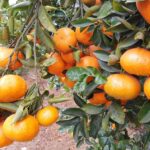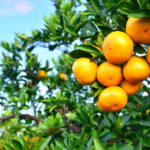Q&A: Commercial strategy of the Colombian citrus sector

Continuing our analysis of the Colombian citrus industry, FreshFruitPortal.com spoke to Asofrucol Manager Álvaro Ernesto Palacio to learn about the strategies, developments, and profitability of the industry looking to the future.
What strategies are you implementing to boost Colombian citrus exports?
More than seven years ago we established an agroecological model in citrus production, to reach the world with a differential. This strategy has already been implemented in Colombia, it is accepted by the European Union and the world because it takes care of the environment, water, soil, and all its components.
What’s going on with the citrus products agribusiness?
The citrus agribusiness in Colombia is incipient. I think it will remain so until there is not enough citrus, in this case, oranges, planted in the country. I insist that Colombia, in order to have citrus agroindustry, will have to increase the acreage of sweet oranges to have the raw materials and be able to transform them.
We’re seeing good opportunities for oranges globally, due to the loss of areas that the different producing countries have had. For example, Brazil was the great producer of oranges and today has lost many acres, the United States in Florida has also had problems in citriculture.
It is important to remember that European and American consumers like orange juice before or after breakfast, so it is necessary to promote the planting of the crop. In addition, it is necessary to have a plant that can extract at least four products from an orange or a lemon.
Continuity depends on the number of hectares planted and there is still a long way to go before there is a sufficient quantity to be able to say: "We have an orange agroindustry for the world".
What are your main destination markets?
About 73% of our market is the United States due to the proximity we have, despite having such a big competitor as Mexico. There are other countries such as the United Kingdom and the Netherlands where we ship fresh Tahitian lime and also organics.
We are developing, in the short term, strategies not only for the United States, but also for the world, and it is with the agroecological model that we have established. It is the model we call 'We are Tropical Agriculture', which will differentiate us from the rest of the world, because we care for the environment and above all for human beings.
What about the profitability of the Colombian citrus business in the coming years?
The profitability of the business is related to production costs. Our agroecological model allows us to reduce production costs by up to 70%, which makes us very competitive. We are doing this and we are demonstrating it.
I, as a citrus grower, can say that today my production costs are roughly 500 Colombian pesos (about $0.12) for a kilo of Tahiti lime. This is due to the agroecological model, which is our big bet.
In addition, this has to generate a social model. This is the collective path that we are developing today in Colombia in the short term.
Let us remember that in Colombia we have a wide variety of fruits, 70 in total, including avocados and blueberries -which are growing-, passion flowers, pitahaya, and other products that require an agroecological model to be acceptable in international markets.
Since human beings are our reason for being, that is why our business strategy is linked to the same production model, which today we have already established in Colombia, which will soon be a seal of quality and safety and environmental quality of our products to the world.














































